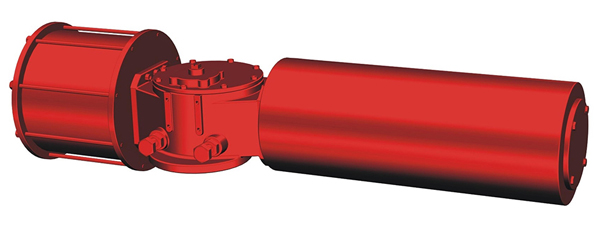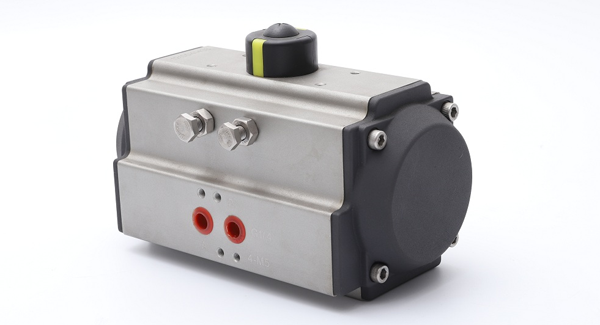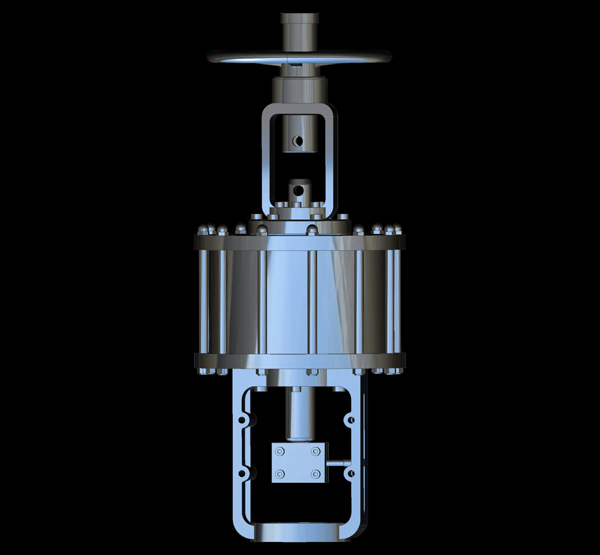A pneumatic actuator (also called a *pneumatic cylinder* or *air actuator*) is a critical device in industrial automation. It converts compressed air energy into mechanical motion to open, close, or adjust valves, enabling precise control of fluid flow in pipelines. Known for reliability, speed, and explosion-proof capabilities, pneumatic actuators are widely used in power plants, chemical processing, oil refineries, and more.
How Do Pneumatic Actuators Work
Pneumatic actuators rely on compressed air to drive pistons or diaphragms, generating linear or rotational motion. When air pressure increases, the force pushes a piston or diaphragm, creating movement that operates connected valves. This mechanism allows quick response times and high torque output, making them ideal for demanding industrial environments.
Types of Pneumatic Actuators
Pneumatic actuators are categorized by motion type, structure, and operation mode. Below are the key types, including spring return, double-acting, and Scotch Yoke pneumatic actuators:
1. By Motion Type
- Linear Actuators: Produce straight-line motion (e.g., push-pull rods for gate valves).
- Angular/Rotary Actuators: Generate rotational motion (e.g., quarter-turn ball or butterfly valves).
2. By Structural Design
- Diaphragm Actuators: Use air pressure to flex a diaphragm, ideal for low-force, high-precision tasks.
- Piston Actuators: Deliver high thrust for large valves or high-pressure systems.
- Rack-and-Pinion Actuators: Convert linear motion into rotation for precise valve control.
- Scotch Yoke Pneumatic Actuators: Utilize a sliding yoke mechanism for high torque in heavy-duty applications (e.g., large ball valves).

3. By Operation Mode
Spring Return Pneumatic Actuator (Single-Acting):
– Uses compressed air to move the piston while a spring provides automatic reset when air supply is cut.
– Two subtypes: *Normally Open* (closes with air, opens without) and *Normally Closed* (opens with air, closes without).
– Ideal for fail-safe applications requiring valve position recovery during power loss.
Double-Acting Pneumatic Actuator:
– Requires air supply to both piston sides for bidirectional movement.
– No spring mechanism; ideal for continuous operations needing frequent valve reversals.
– Offers higher force output compared to spring-return models.

Key Applications of Pneumatic Actuators
Pneumatic actuators excel in industries demanding safety, speed, and durability. Below are their primary use cases:
1. High-Thrust Requirements: Powering large valves in pipelines or pressure systems.
2. Hazardous Environments: Explosion-proof operation in oil refineries, chemical plants, or mining.
3. Rapid Valve Control: Quick-response systems for emergency shutdowns or flow adjustments.
4. Harsh Conditions: Reliable performance in extreme temperatures, humidity, or corrosive settings.
5. Automation Systems: Integration with PLCs for seamless process control.
6. Manual/Auto Switching: Built-in handwheel for manual override during system failures.

Why Choose Pneumatic Actuators
- Fast Response: Immediate reaction to control signals.
- High Reliability: Minimal maintenance with robust construction.
- Explosion Safety: No electrical sparks, suitable for flammable environments.
- Cost-Effective: Lower upfront and operational costs compared to hydraulic/electric alternatives.
Conclusion
Understanding what a pneumatic actuator is and selecting the right type—whether a spring return pneumatic actuator, double-acting actuator, or Scotch Yoke pneumatic actuator—ensures optimal performance in industrial systems. By matching the actuator’s design (linear, rotary, diaphragm, or piston) to your operational needs, you enhance efficiency, safety, and longevity in fluid control applications.
For industries prioritizing precision, durability, and safety, pneumatic actuators remain the go-to solution for valve automation.
Post time: Mar-26-2025






